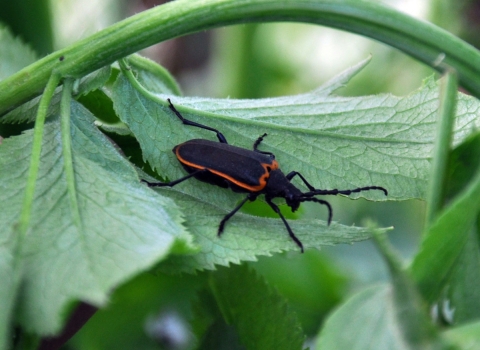MISSOULA – The U.S. Fish and Wildlife Service (Service), in partnership with the U.S. Forest Service and Defenders of Wildlife, has completed grizzly bear genetic survey activities for 2021. As part of ongoing efforts to monitor grizzly bears in the lower-48 states, this project collected photography and genetic data to assist biologists in understanding more about the grizzly bears that have been dispersing throughout southwest Montana over the past decade.
Preliminary information gathered by cameras used in the study has revealed the presence of two grizzly bears near the headwaters of the east fork of the Bitterroot River in southwest Montana. While there were some previously verified sightings approximately 30 km to the south and east, these are the first grizzlies to be documented in this area in recent history. The Service is working with local partners to notify members of the local community regarding this information through a series of local meetings and a presentation to a public meeting of the Interagency Grizzly Bear Committee, Bitterroot Subcommittee on October 27, 2021.
“Partnering with the U.S. Forest Service and Defenders of Wildlife allowed this project to be larger in scope than originally planned and more successful than if the Service had worked on our own,” said Service grizzly bear recovery biologist Jennifer Fortin-Noreus. “Collaborative conservation efforts are vital to the successful recovery of grizzly bears. We look forward to continuing this project with our partners during the 2022 field season.”
This non-invasive survey used temporary barbed-wire corrals and remote cameras with a scent lure in the middle to attract bears to the sites without providing any food reward. As bears climb over or under the barbed wire to investigate the scent, their hair collects on the barbs without causing injury to the bear. The Service is processing and analyzing genetic data from the hair samples collected and expects results sometime during the second quarter of 2022.
More information about grizzly bear conservation and biology can be found on the Interagency Grizzly Bear Committee. To learn about the operational aspects of this genetic survey, please visit this Defenders of Wildlife video.
As bears enter hyperphagia to gather as many calories as possible before entering their dens for the winter, the Service and our partners remind residents and visitors to grizzly bear country to help Keep Bears Wild. All those visiting and living in grizzly country are encouraged to know how to use and carry bear spray; reduce and secure food/attractants at homes and campsites; and never feed or approach wildlife.
The mission of the U.S. Fish and Wildlife Service is working with others to conserve, protect, and enhance fish, wildlife, plants, and their habitats for the continuing benefit of the American people. For more information on our work and the people who make it happen in the West, connect with us through any of these social media channels: Facebook, Twitter, Flickr, YouTube, and Instagram.



